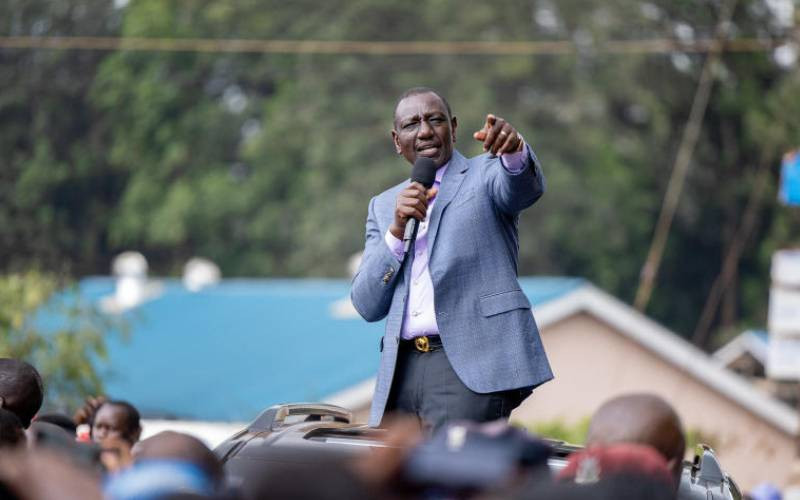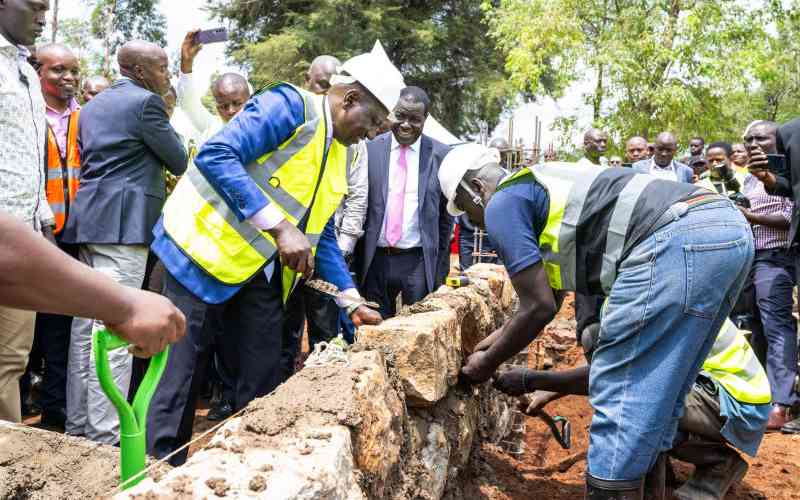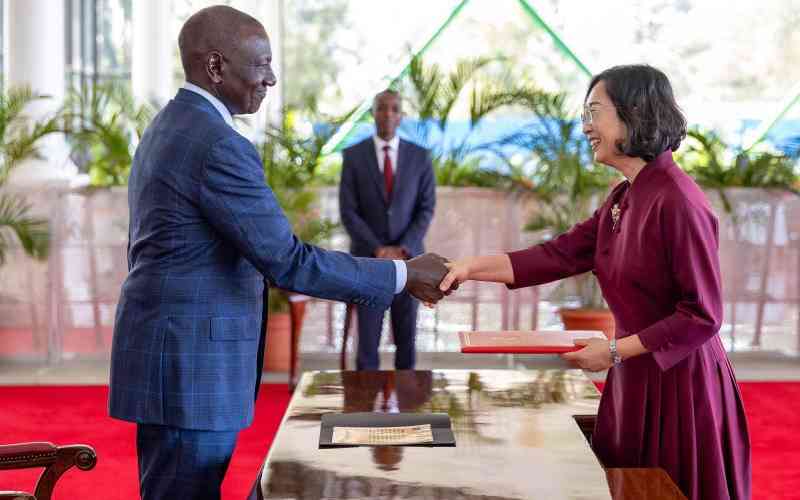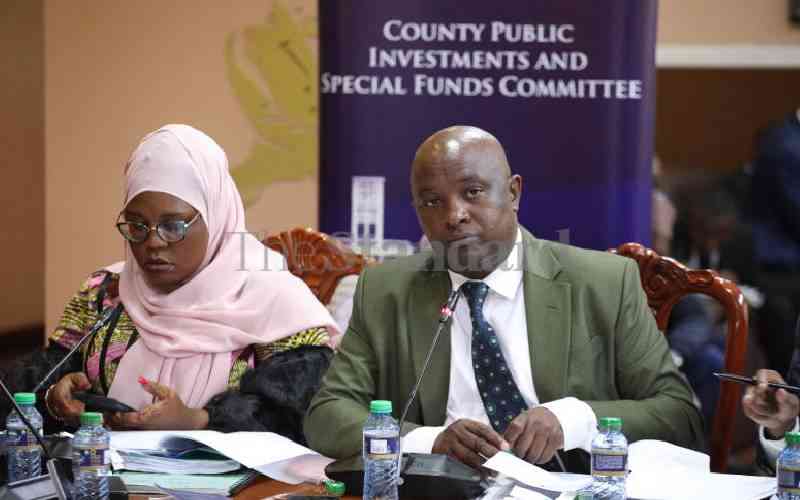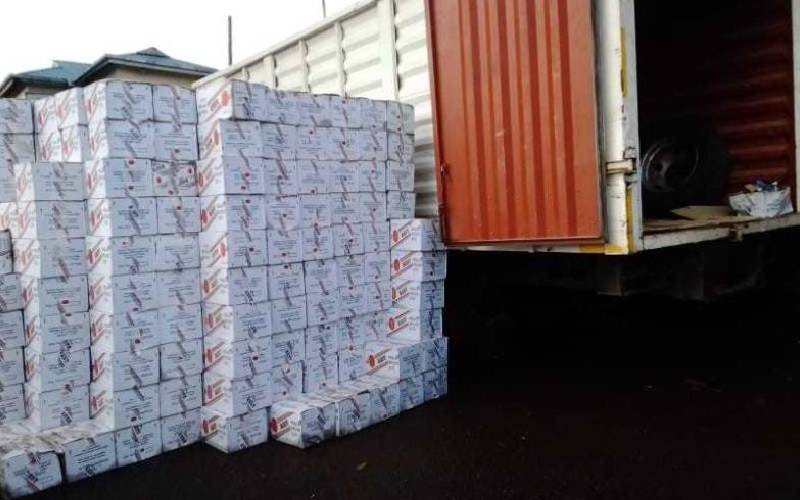By Amos Kareithi
It was unthinkable, a sign of madness and self-destruction for a native to look at a white bwana straight in the eye without bowing down in humility.
When the white bwana, who happened to be a district commissioner, a man tried and tested in war, was subject of any sign of disrespect, the consequences were too grim to contemplate.
But the unthinkable happened. On that inauspicious day the district commissioner triumphantly rode down the streets of Kisii on a mule, escorting thousands of captured cattle he had just impounded.
The DC had the power of life and death and needed a slight excuse to draw his pistol or crack his whip to reprimand whoever crossed his path or obstructed him in his mission in his majesty’s service.
G A S Northcote, popularly known as Nyarigoti by locals, was not an ordinary administrator.
He was a creature of conflict and ruled at a time when might was right and collective communal punishment was a reality.
Raiding neighbours
Nyaigoti had first set foot in Kisii, then known as Getembe, in style when he accompanied an expedition dispatched to Kisii to investigate reports that some people had been killed by cattle rustlers.
William Ochieng, in The Gusii of Western Kenya from 1500-1914, explains that shortly before the expedition in 1904, the Kisii and their neighbours in Nyanza were administrated from Uganda protectorate.
No white man had visited Kisii before then and the local people did not understand the conventions of modern Government now that they were under the King of England.
They continued raiding their neighbours to replenish their stock. Ochieng explains how one such raid earned the Kisii the attention of the Nyanza sub-commissioner SS Baggie, who was then based in Kisumu.
When it was reported that the Kisii had raided a neighbouring community Baggie unleashed an expedition on September 1904 led by Milton.
Milton, who was commanding 100 soldiers and 50 policemen, was accompanied by Northcote, then a rookie administrator who was at the time a political officer.
As soon as the military hit the ground in Kisii, the soldiers went on a shooting spree as they seized livestock, feasted on free meat and torched houses. Ochieng recounts how one resident of South Mugirango, Nyaraba, protested after his prized bull was seized by soldiers and was shot dead and his house torched for his "disrespect."
Stay informed. Subscribe to our newsletter
Another chief, Oyugi of Wanjare, was given Union Jacks to hoist on top of grass thatched village huts whose owners were supposed to surrender cows as a punishment for resisting the expedition.
Suing for peace
There is a moving account of Nyakina, an elder who tried to sue for peace after witnessing the plunder and killing visited on his kinsmen.
Nyakina was shot through the neck at point blank as he proffered his hand as a gesture of peace while an estimated 100 other villagers were mauled by the military gunfire.
By the time the guns finally fell silent, Kisii had lost an estimated 3,000 animals to the soldiers during the month-long orgy of violence that left thousands homeless after their houses were torched.
In the meantime, Northcote took his first tour of Kisii to select the ideal site where he would later situate the administration headquarters.
Northcote was the first administrator in Kisii, when he was ultimately posted to the area from Karungu in Homa Bay, three years after the expedition. By the time of his posting in 1907, the locals were still smarting from the brutality meted by Northcote and his countrymen and were egged by a local medicine woman, Moraa.
According to Prof Joseph Nyasani, chairman of Kisii Campus of Egerton University, Moraa challenged the community’s warriors to resist after the three-week expedition led by Major Kirkpatrick.
It was while Northcote was escorting the seized cattle that one of Moraa’s disciples decided to redeem the community’s pride by attacking him.
The attack was staged on January 12, 1908 when Otenyo, who according to Ochieng was Moraa’s foster son, ambushed the DC and hurled his spear. The historian contends that on the day of the attack, Otenyo had been given beer and medicine to protect him against bullets by his foster mother.
The spear caught the DC by the shoulder and injured him, sending the entire Kisiiland into frenzied celebration in the belief that their tormentor had died.
Moraa had given some young warriors her potent medicine that was supposed to neutralise the power of the bullet upon hitting the body.
Instantly songs were composed in praise of Otenyo, the fierce warrior who challenged the people’s tormentor, with folks immortalising the hero for killing the DC.
In the ensuing chaos, suspected sympathisers of the white man were targeted in Kisii, leading to the killing of three people. The government’s response was predictably fast and furious after reports reached 10 Downing Street via a cable by Governor Saddler on January 18, 1908.
Nyanza Provincial Commissioner John Ainsworth immediately dispatched Dr H S Bierden to treat Northcote and at the same time ordered the company of 3rd Kenya African Rifles to proceed to Kisii to quell the revolt.
At the same time W R Folan led a contingent of 54 African police officers from Kisumu and 150 porters who arrived in Kisii on January 15, 1918 only to find that Northcote had not been killed as earlier reported.
The reinforcements were met by Kisii spearmen who attacked the column comprising of 14 British KAR soldiers and 327 non-commissioned officers and 500 porters.
Food destroyed
The soldiers shot at the locals, destroyed their crop and killed anybody who resisted as they impounded any cattle they came across.
By the end of the expedition on February 13, all the food in the field and the granaries had been destroyed and 10,000 head of cattle and sheep captured, according to Ochieng.
When Northcote learnt that 160 people had been killed to avenge his attack, he was upset and lamented: "It would take too long to describe the idiocy, obstinacy and want of military operations."
He had also written to his father explaining how the chaos started. "Dear Father, You may have heard all the things. Recently, I went out to seize cattle to punish Kitutu but one warrior who resented my sense of justice threw a spear at me and got me by the shoulder. It was not a big deal and I will be up in a few days."
Witch look-alike
The colonial secretary at the time, Winston Churchill, also expressed his displeasure and remarked: "It looks like butchery and if the House of Commons gets hold of this, our plans for East African Protectorate will be under cloud."
Moraa, who had been prodding people to revolt against the whites, was arrested a day after the attack and is described unflatteringly by Folan as looking like a witch.
Folan claims that Moraa was tricked into assembling all the chiefs and convinced them to cooperate with the government and offered an opportunity to offer herself as a sacrificial lamb.
Otenyo was tricked into the meeting by elders who handed him to the authorities where he was pressurised to confess in exchange of the cattle that had been impounded.
Some accounts say that there were plans to deport Moraa to the coast but she was released later triggering some locals to compose songs of her betrayal to Otenyo.
It is not very clear what happened to Otenyo. Prof Nyasani says he was tried in public and executed by a firing squad at Kisii Stadium so that his death could serve as a lesson to other hotheads.
There is a different version indicating that the freedom fighter was arrested and ferried to Nairobi but it is not clear what was done to him later. Some believe that on the day of the attack, Otenyo was high on busaa but was prevailed upon by the chiefs to confess that he had smoked bhang (Cannabis sativa).
Homesteads raided
"The elders wanted to preserve the traditional brew. At that time bhang was widely grown and was even being smoked in public. At times it was even being smoked communally as happens in busaa parties," Prof Nyasani explains.
The histories of Otenyo and Nyarigoti will be forever entwined, mentioned in the same breath in Kisii land although echoes of the administrator’s excesses are immortalised.
History books are replete with cases of how he raided homesteads in Kitutu and took away grains and goats whenever he ran out of food supply.
On one occasion in July 1907, he raided Bogeka and took 1,000 head of cattle but he was waylaid and the policeman escorting the cattle killed by angry owners: the DC was forced to return 965 head of cattle.
Perhaps if Moraa’s medicine was potent enough and could water down gunfire, Gusiiland would not have lost so many of her sons. Then the warriors would have been more successful in driving out the whites.
[email protected]
 The Standard Group Plc is a
multi-media organization with investments in media platforms spanning newspaper
print operations, television, radio broadcasting, digital and online services. The
Standard Group is recognized as a leading multi-media house in Kenya with a key
influence in matters of national and international interest.
The Standard Group Plc is a
multi-media organization with investments in media platforms spanning newspaper
print operations, television, radio broadcasting, digital and online services. The
Standard Group is recognized as a leading multi-media house in Kenya with a key
influence in matters of national and international interest.
 The Standard Group Plc is a
multi-media organization with investments in media platforms spanning newspaper
print operations, television, radio broadcasting, digital and online services. The
Standard Group is recognized as a leading multi-media house in Kenya with a key
influence in matters of national and international interest.
The Standard Group Plc is a
multi-media organization with investments in media platforms spanning newspaper
print operations, television, radio broadcasting, digital and online services. The
Standard Group is recognized as a leading multi-media house in Kenya with a key
influence in matters of national and international interest.

